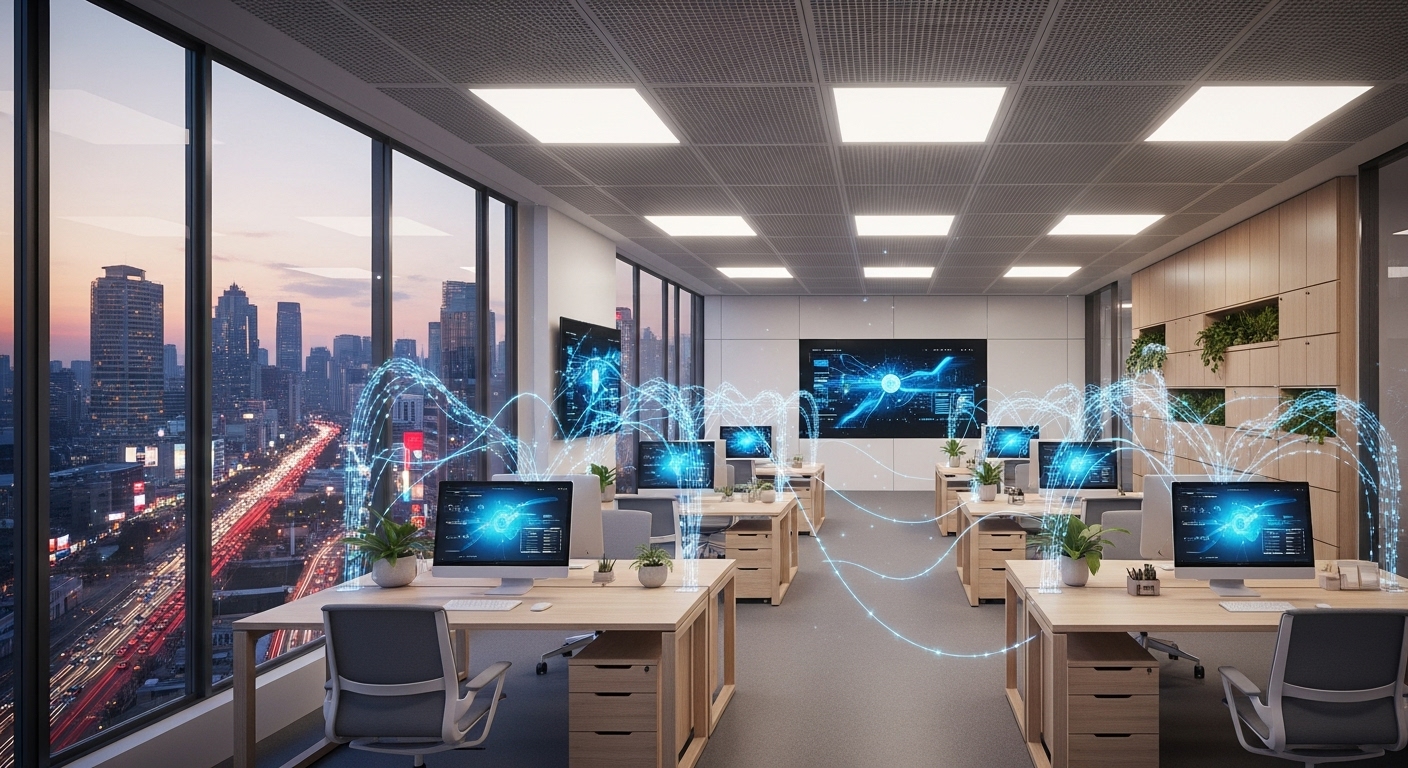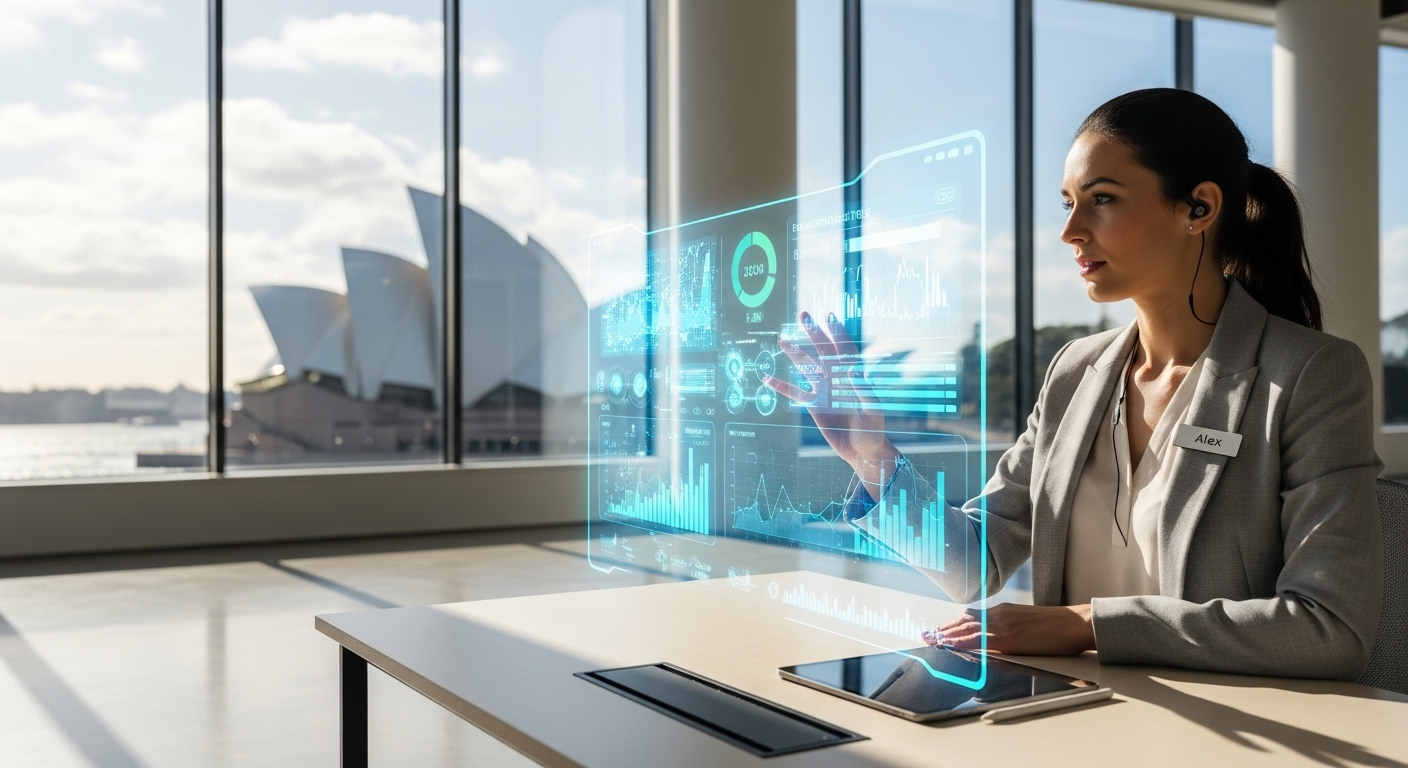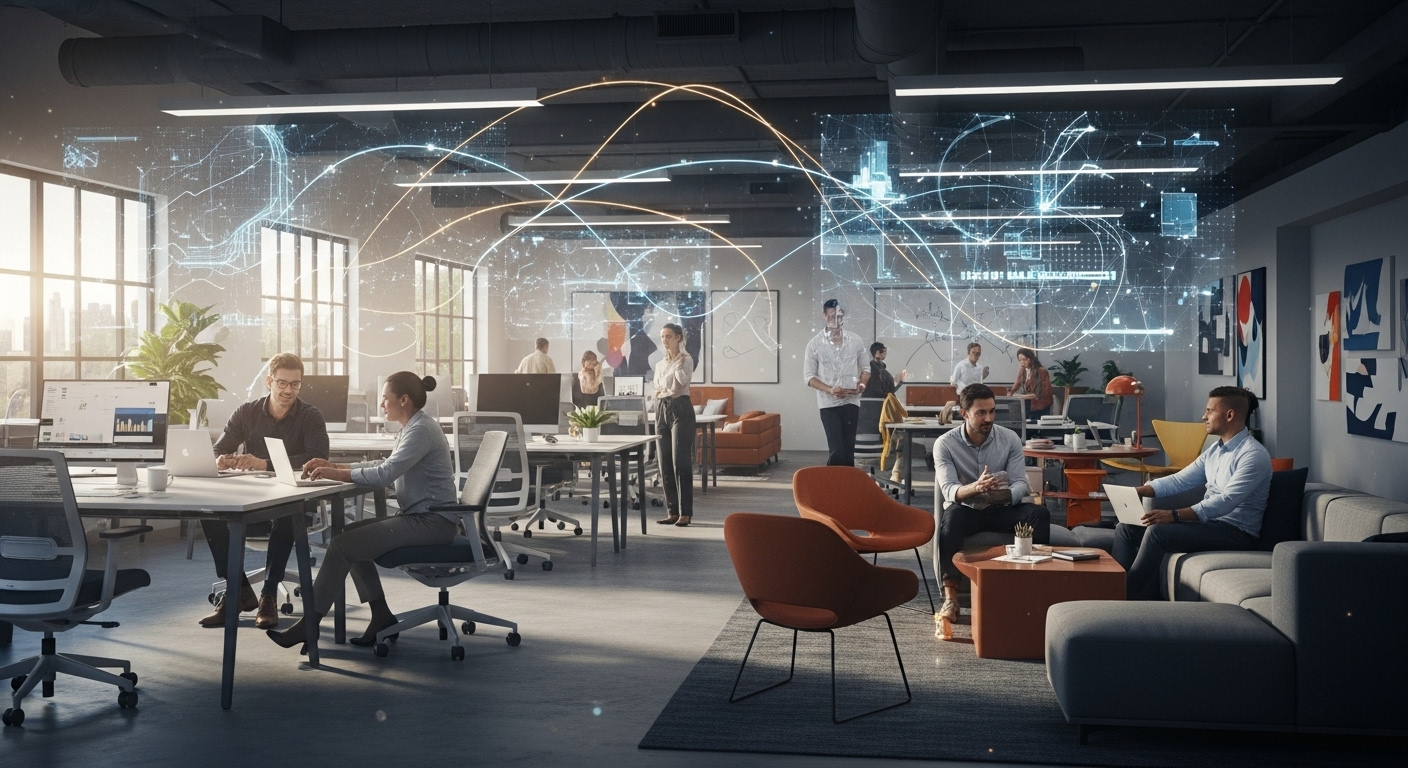The term ‘smart office’ has become ubiquitous, often conjuring images of voice-activated lights and app-based room booking. While these are steps in the right direction, they represent only the surface of a much deeper technological evolution. We are now on the cusp of the next frontier: the ‘sentient workspace.’ This is not merely an office filled with connected gadgets, but a holistic environment powered by ambient intelligence (AmI) — an ecosystem that perceives, understands, and responds to its occupants’ needs in real time, often without direct commands. As businesses navigate the complexities of hybrid models and the continuous demand for higher productivity and employee well-being, the sentient workspace emerges as a critical framework for the future of work. It promises to dissolve operational friction, create hyper-personalized experiences, and transform the physical office from a static container into a dynamic partner in innovation. This article will explore the core components of this evolution, from the underlying technologies of AI and IoT to the profound impact on human potential, while also navigating the crucial considerations of security, privacy, and practical implementation.
From Smart to Sentient: Defining the Ambiently Intelligent Office
To truly grasp the concept of a sentient workspace, we must first distinguish it from a standard smart office. A smart office is largely reactive; it requires a user to perform an action, such as tapping a phone or speaking a command, to elicit a response. In contrast, a sentient workspace driven by ambient intelligence is proactive and predictive. AmI is a digital environment that is sensitive and responsive to the presence of people. The core principles that enable this shift are context-awareness, personalization, and adaptiveness. Context-awareness is the system’s ability to understand who you are, where you are, what you are doing, and even who you are with. It synthesizes data from multiple sources—calendars, occupancy sensors, user profiles—to build a complete picture of a situation. Personalization leverages this context to tailor the environment to individual or group preferences. This could mean adjusting the temperature and lighting to your preferred settings the moment you approach a hot desk. Adaptiveness is the final piece, where the system learns over time. By analyzing patterns of behavior, the workspace can begin to anticipate needs. For example, it might automatically book a quiet pod for you every Tuesday afternoon because it recognizes this is your dedicated time for deep-focus work. The goal of AmI is to make the technology disappear into the fabric of the environment, creating a seamless and intuitive experience that supports work rather than demanding attention.
The Technological Core: Sensors, AI, and IoT Convergence
The sentient workspace is built upon a sophisticated convergence of three key technologies: the Internet of Things (IoT), sensors, and Artificial Intelligence (AI). IoT forms the nervous system, creating a network where every device—from lightbulbs and thermostats to chairs and coffee machines—can communicate. These devices are equipped with an array of sensors that act as the sensory organs of the office, gathering vast amounts of raw data. Occupancy sensors detect presence and movement, environmental sensors monitor air quality, temperature, and humidity, and light sensors measure ambient brightness. This data is the lifeblood of the system, but it’s meaningless without a brain to process it. That brain is AI. Machine learning algorithms sift through the continuous streams of data from the IoT network to identify patterns, learn preferences, and make intelligent decisions. For instance, the AI can correlate data from occupancy sensors and employee calendars to optimize HVAC and lighting, significantly reducing energy consumption by not conditioning empty rooms. In a more advanced scenario, it can analyze traffic flow throughout the day to suggest adjustments to office layouts or identify underutilized areas that could be repurposed.
As technology research firm Gartner notes, “By 2025, 50% of relevant enterprises will use an AI-powered platform to orchestrate their business applications and platforms.”
This orchestration is the essence of the sentient workspace, where AI doesn’t just manage one system, but harmonizes all of them to create a single, cohesive, and intelligent environment.
Boosting Human Potential: Productivity and Well-being Reimagined
The ultimate purpose of a sentient workspace is not the technology itself, but its impact on the people within it. By systematically removing minor frictions and optimizing the environment, ambient intelligence can unlock significant gains in both productivity and employee well-being. Consider the cognitive load associated with navigating a typical office day: finding an available desk, locating colleagues for an impromptu meeting, adjusting uncomfortable lighting, or searching for an open conference room. A sentient workspace automates these tasks. An associated mobile app could guide an employee to a pre-assigned desk that is already adjusted to their ergonomic preferences. The system could analyze team members’ locations and suggest the nearest available collaboration space. This reduction in ‘work about work’ frees up mental bandwidth for complex problem-solving and creative thinking. Furthermore, the focus on well-being is a defining feature. The system can implement principles of biophilic design dynamically. For example, smart lighting can mimic natural circadian rhythms, increasing blue light tones in the morning to boost alertness and shifting to warmer tones in the afternoon to reduce eye strain. Air quality sensors can trigger ventilation systems when CO2 levels rise, preventing the grogginess that plagues stuffy meeting rooms. The environment becomes a silent partner in maintaining health and focus, contributing to higher employee satisfaction and retention.
The Personalized Journey: Hyper-Customization of the Employee Experience
One of the most transformative aspects of the sentient workspace is its ability to deliver hyper-personalized experiences at scale. In a traditional office, the environment is a one-size-fits-all compromise. In a sentient office, it molds itself to each individual. This begins with user profiles, where employees can set their preferences for temperature, lighting intensity, and even desk height. When they book a hot desk or enter a focus room, the space instantly configures itself to their settings. This level of customization fosters a sense of comfort and ownership, even in non-assigned seating environments. The personalization extends beyond simple environmental controls. It can shape an employee’s entire journey through the workday. An intelligent platform can integrate with project management tools and calendars to understand an employee’s schedule. If a user has back-to-back video calls scheduled, the system could proactively suggest booking a soundproof booth. If a team is working on a collaborative project, it could highlight nearby available huddle spaces on a digital map. This creates what is known as a ‘frictionless experience,’ where logistical hurdles are anticipated and removed by the environment itself. The result is a workplace that feels less like a building and more like a personal assistant, actively working to support each employee’s unique workflow and needs, which is a powerful differentiator in the modern competition for talent.
The Guardian in the Walls: Navigating Security and Privacy in a Data-Rich Environment
The immense power of a sentient workspace is derived from data—data about where people are, what they are doing, and how they use the space. This immediately and rightly raises critical questions about security and privacy. Implementing ambient intelligence requires a ‘security-by-design’ approach. The entire IoT network must be fortified against cyber threats, with robust authentication protocols, end-to-end data encryption, and regular security audits to protect against vulnerabilities in connected devices. However, cybersecurity is only half the battle. The ethical handling of data and the protection of employee privacy are paramount to building trust and ensuring adoption. Organizations must be transparent about what data is being collected, why it is being collected, and how it is being used. A core principle should be data anonymization and aggregation whenever possible. For example, the system needs to know that a room is occupied to adjust the climate control, but it doesn’t need to know the specific identity of the person in it for that task. Clear, accessible policies must be established, and employees should be given control over their personal data and preferences.
The principle of ‘purpose limitation,’ central to regulations like GDPR, is a useful guide: data collected for one purpose (e.g., space utilization analysis) should not be used for another (e.g., individual performance monitoring) without explicit consent.
Building a sentient workspace is not just a technological challenge; it is a cultural one that demands a deep commitment to digital ethics.
The Implementation Blueprint: A Phased Approach to Building Your Sentient Workspace
Transforming a traditional office into a sentient workspace can seem daunting, but it’s a journey that can be undertaken in manageable phases rather than a single, disruptive overhaul. A logical, phased approach allows for learning, adaptation, and scaling based on demonstrated value. Phase 1: Foundational Infrastructure. The first step is to ensure the digital backbone is strong. This means investing in high-density Wi-Fi 6 or 6E, implementing a scalable and secure IoT management platform, and deploying basic, non-intrusive sensors like occupancy and motion detectors. The initial goal is to gather baseline data on how the current space is used. Phase 2: High-Impact Systems. With the foundation in place, focus on systems that offer the most immediate and visible benefits. Intelligent lighting and climate control are excellent starting points, as they deliver clear ROI through energy savings and noticeable improvements in employee comfort. A smart room and desk booking system is another high-value addition that addresses a common pain point. Phase 3: Integration and Intelligence. This phase involves breaking down data silos. The goal is to integrate the systems deployed in Phase 2. For example, the room booking system should ‘talk’ to the HVAC and lighting systems so that a room powers up just before a meeting and powers down afterward. This is where the AI layer becomes critical, beginning to analyze cross-system data to find optimization opportunities. Phase 4: Personalization and Feedback. The final phase is about empowering the employee. Roll out user-facing applications that allow for personalization of workspaces. Introduce feedback mechanisms, both active (surveys) and passive (usage data), to continuously learn what is working and what isn’t, allowing the sentient workspace to evolve and improve over time.
Conclusion
The evolution from a smart office to a sentient workspace represents a fundamental shift in our relationship with our physical work environments. We are moving beyond simple automation and connectivity toward a future of ambient intelligence, where our offices are imbued with the ability to anticipate our needs and actively support our goals. This journey involves a sophisticated blend of IoT, AI, and sensor technology, all working in concert to create a seamless, personalized, and adaptive employee experience. The benefits are profound, ranging from measurable increases in productivity and operational efficiency to significant enhancements in employee well-being and satisfaction. However, this powerful new paradigm must be built on an unshakeable foundation of security and ethical data privacy, ensuring that the technology serves to empower, not to monitor. By following a phased implementation and maintaining a human-centric focus, organizations can begin to weave this intelligence into their own office fabric. The sentient workspace is more than just the next tech trend; it is the blueprint for a future where our workplaces are no longer inert structures, but living, breathing ecosystems designed to help us achieve our full potential.





